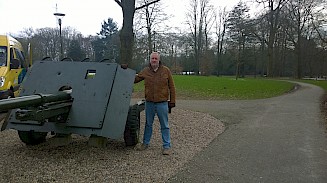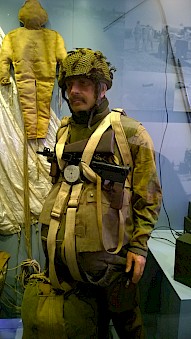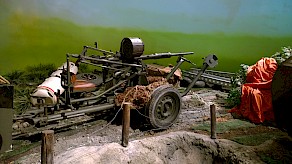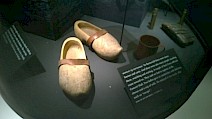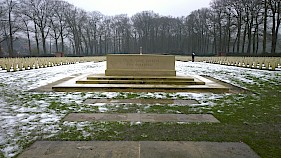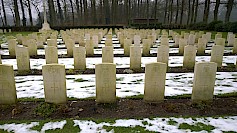Arnhem part 3
The final section of our whirlwind tour of Arnhem would take us to the Hartenstein Hotel (the Oosterbeek Airborne museum) and to the Arnhem Oosterbeek cemetery.
In the grounds of the museum there are three 17 pounders (literally salvaged from around Oosterbeek - meaning that 3 of the 11 guns that went into action during the battle survive) and an M4 Sherman, commemorating the final liberation of the area in april 1945. It’s easy to forget exactly how huge these 17lbr guns were. The Hartenstein Hotel was the headquarters and one of the casualty station for the British Airborne while they were in Oosterbeek. The Museum now tells the story of the Arnhem landings .
The Museum is full of artifacts and photos from the battle (which solved Rich’s and Jasper’s debate over fences - waist high wire fences it is!). Photos from the time can give essential information on the battle and small details which can be easily missed (like a photo of StuG III crew wearing helmets). Both sides sent war correspondents and photographers to the battle: the British initially because of the expected successful crossing of the Rhine, and the Germans to record their own expected victory.
The exhibition moved downstairs to the ‘Arnhem Experience’ (a walkthrough display showing the essentails of the battle). There was also a moving exhibition on the effect on the Dutch populace, who were given two hours to vacate the area. What they didn’t take with them was looted by the Germans. There was also information on the ‘Hunger Winter’ where thousands of Dutch starved in the German occupied zones.
After Hartenstein, we took a trip to the Arnhem Ooseterbeek War Graves Cemetery. I’m not ashamed to say I found the place very moving and was in tears at several points during our visit. Even thinking about it now as I write this makes me quite emotional.
Over 1700 tombstones, each showing the different nationalities and backgrounds of the troops who fought here. Some had personal inscriptions from their families, quite a few are still ‘known unto God’, unidentified Allied soldiers who fell at Arnhem and Oosterbeek. Some were from later campaigns, such as the crossing of the Rhine; soldiers were brought to the nearest cemetery for burial. I’m glad I had another opportunity to pay my respects (this is my second visit).
I’d like to thank Jasper and Christy for making our trip possible and Richard Clarke who added to the enlightening conversation on our tour of the battlefield. If you are at all interested in the battles around Arnhem and Oosterbeek, nothing beats seeing them first-hand. This visit really has put a number of pieces of the puzzle into place, helped by having two expert guides with me.


